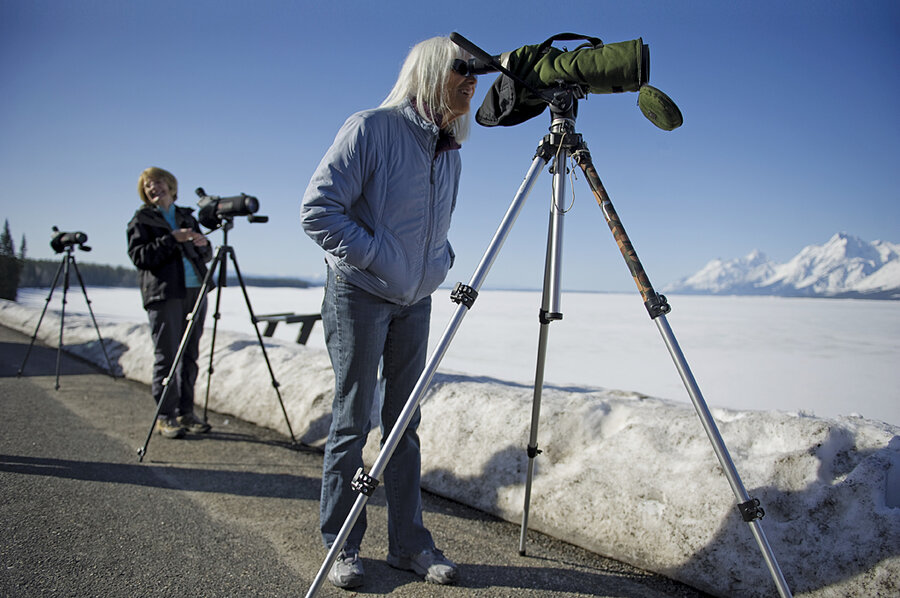Finding a way to live with wolves
Loading...
As a graduate student in the late 1950s, L. David Mech began studying the wolves of Isle Royale. He couldn’t have asked for a more perfect laboratory.
The island is 28 miles from the shore of Lake Superior. It has been touched lightly by humans over the centuries. Biologists believe that moose, which are incredible swimmers, made their way to the well-vegetated island sometime in the early 20th century.
Undisturbed by predators, they thrived until a pair of wolves crossed the ice pack during the harsh winter of 1949. That set in motion a back-and-forth relationship between predator and prey that is considered unique in all the world.
Dr. Mech first described the relationship in his 1966 book, “The Wolves of Isle Royale.” Published in the early days of the environmental movement, the groundbreaking work provides fascinating insights into the role food, weather, pests, and genetic diversity play in the balance of nature. The wolf population waxes and wanes. Alpha males rise and fall. The moose herd flourishes, depletes its resources, crashes, recovers.
Having studied wolves for six decades, Mech is the first to admit that Isle Royale is not the real world. It is the perfect laboratory, a naturally occurring isolation chamber for biological study. “I knew even as I was studying the wolves and moose that I had to go elsewhere,” he says, “that what I was learning didn’t apply anyplace but the island.”
His research has taken him from Sweden to Israel, India to the high Arctic. He founded the International Wolf Center in Ely, Minn., and is a professor at the University of Minnesota. If there is one big take-away from the generations of Canis lupuses he has known, it is that they are not magical beings.
Yes, they are important in the cycle of life in places like national parks. But Mech is no romantic. He rejects the idea that wolves are superstars of natural balance, that they trim elk herds and help beavers flourish and cause an Edenic return of ponds and waterfalls and ecological harmony. They overdo it and mess up just like other species do.
“I don’t believe that wolves help save the world,” he says. Wolves should be preserved, he firmly believes, especially in national parks, because, like lions, bears, tigers, and other charismatic species, humans are interested in them.
We see them as purer, more original versions of dogs and cats and vestiges of a world in which we were not dominant. But they have to be controlled. Wolves are wild and don’t understand their limits, he says. When they come into contact with livestock, superhighways, and family pets, bad things can happen. (Elsewhere on CSMonitor.com, Todd Wilkinson provides vivid account of the fraught front lines between humans and wolves in the American West.)
Why should anyone living far from wolf country care? Because, as Mech notes, it’s not just about the wolf. It’s about us.
Up and down our highways we go. In and out of our supermarkets, offices, and schools. Every so often, something wild crosses the ice. A newscast reports a brown bear in a backyard 50 miles away. A neighbor’s pet is attacked by a fisher cat. A raccoon raids the garbage bin.
I live near the center of one of the oldest towns in the United States, comfortably inside the sphere of civilization. The dominant wolf on my perfect island is Canis familiaris. In the wee hours last winter, with the furnace pumping and the streets outside covered with snow, I was awakened by Molly, our Scottish terrier, who wanted to visit our well-fenced yard.
While waiting for her to return, I glanced out the front window and saw a very large coyote loping up the street. I can still feel the chill I felt at that moment.
Canis familiaris returned to her favorite pillow. Canis latrans disappeared into the cold night.
John Yemma is the editor of The Christian Science Monitor.





